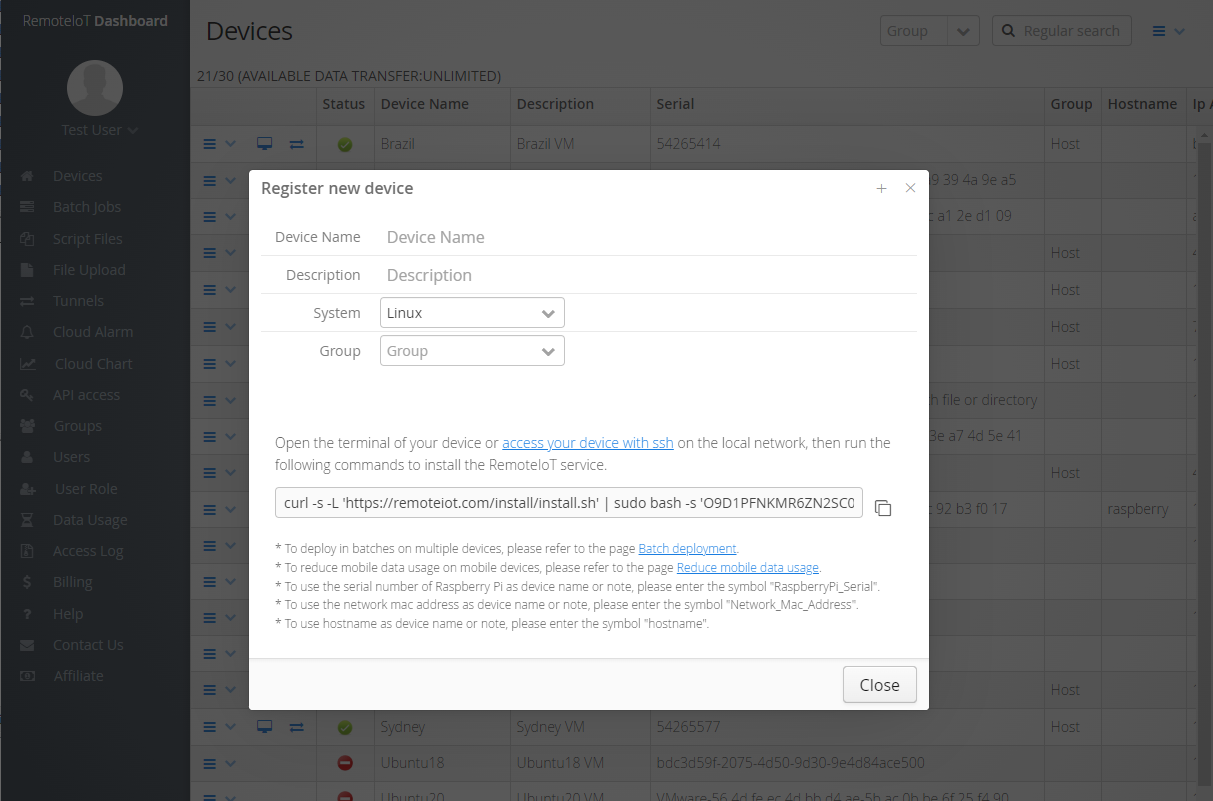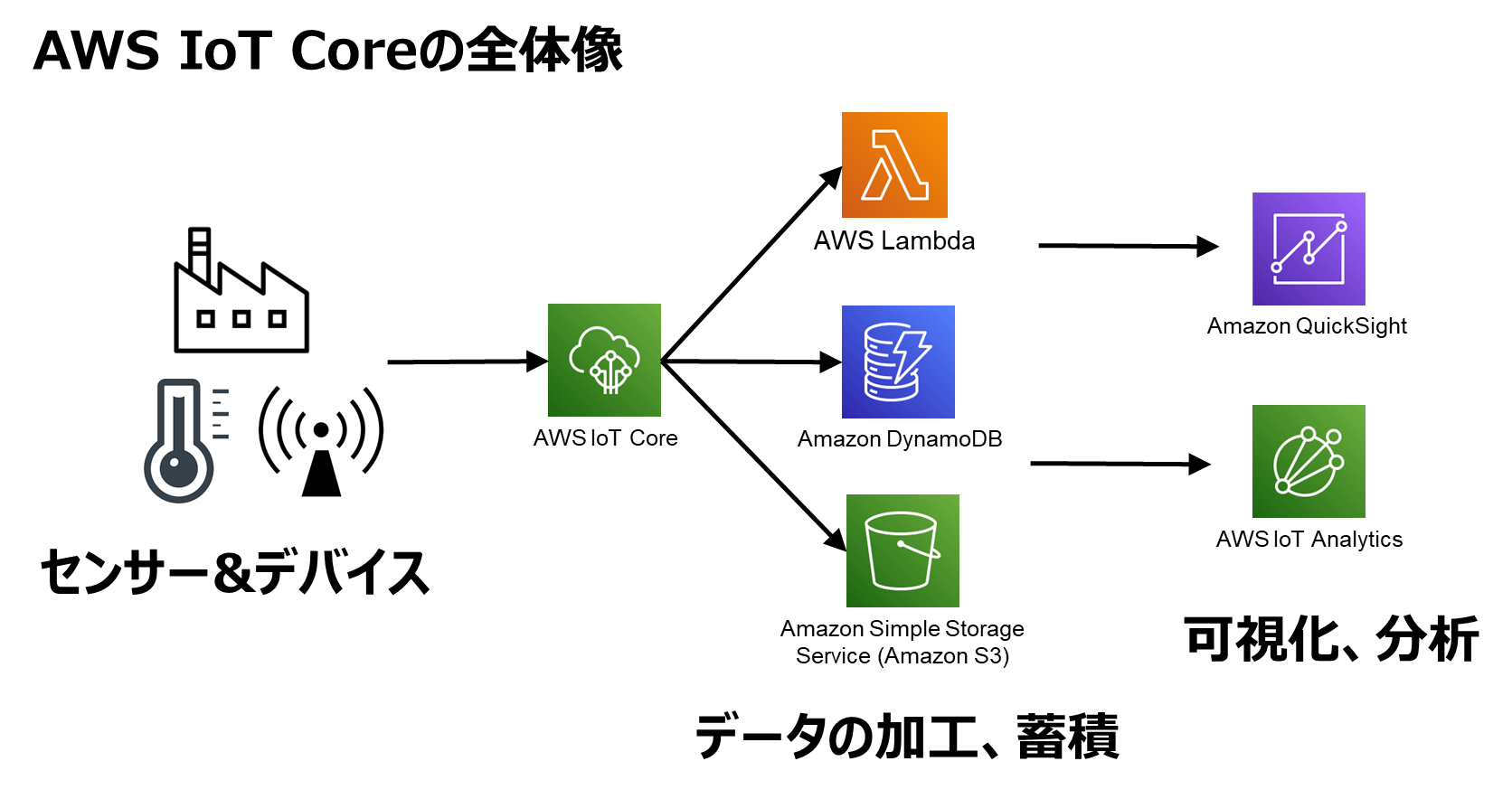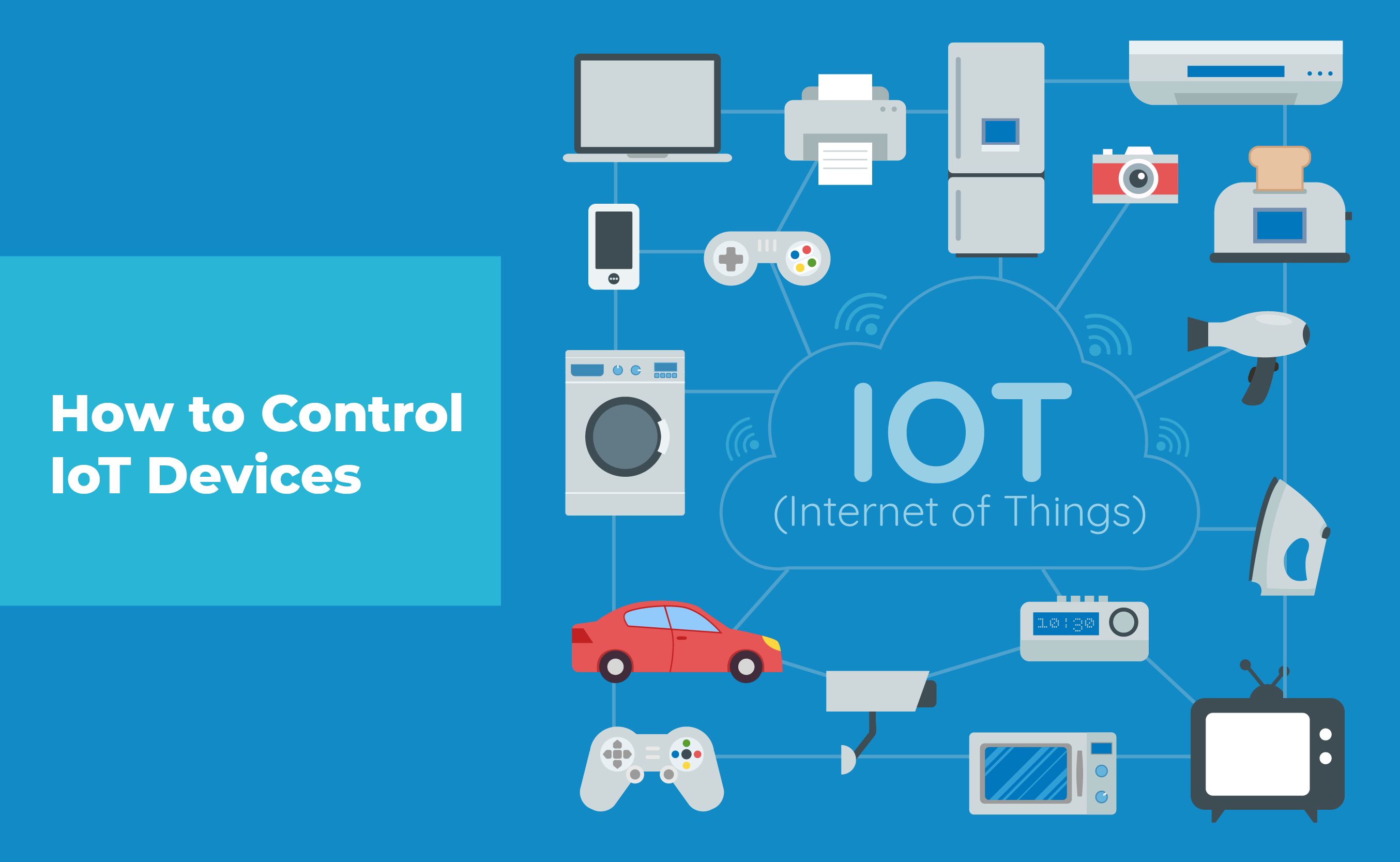Remotely Access IoT Devices - SSH Web Android Free
Have you ever thought about how handy it would be to check on your smart home gadgets or other connected things when you are not actually there? It's a pretty common wish for many folks these days, especially with so many smart devices around us. Getting a hold of your Internet of Things (IoT) items from a distance can make life a good bit simpler, allowing you to manage things whether you are across town or even in another country. It's almost like having a direct line to your devices, no matter where you happen to be at the moment.
This idea of reaching out to your devices without being right next to them is, in a way, what "remote access" is all about. It lets you interact with your smart thermostat, your security camera, or even a tiny sensor tucked away somewhere, all from your phone or computer. People are finding this capability to be quite useful for a whole host of reasons, from making sure everything is running smoothly to tweaking settings on the fly. You know, it really opens up a lot of possibilities for how we interact with our technology.
So, if you have been curious about how to make this happen, perhaps without spending a lot of money, you are in the right spot. We are going to chat about different ways you can get connected to your IoT devices, looking at options like using a secure shell, web interfaces, or even apps on your Android phone. There are, actually, quite a few methods out there that can help you stay in touch with your smart setup, and some of them are completely free to use, which is pretty neat.
- Heb Credit Cards Accepted
- Peachykai Mom
- Cast Of Mythbusters
- Nevada Las Vegas Craigslist
- Cristal Couture Dress To Impress
Table of Contents
- What's the Big Deal About Accessing IoT Devices Remotely?
- How Can You Connect to Your IoT Gadgets from Afar?
- Are There Free Ways to Get This Done?
- What Should You Keep in Mind When Connecting Remotely?
What's the Big Deal About Accessing IoT Devices Remotely?
You might wonder why it is such a big deal to reach your IoT devices when you are not home. Well, think about it for a moment. Many of these devices are set up to do things on their own, but sometimes you need to step in. Maybe you forgot to turn off the lights, or you want to check if the front door is locked. Having the ability to do these things from anywhere gives you a real sense of control and peace of mind. It’s a pretty neat convenience, especially when life gets busy. For instance, you could be at work and realize you left the air conditioning on full blast; being able to switch it off with a few taps on your phone is, actually, a rather helpful feature.
This kind of access also helps with troubleshooting. If a device is acting up, you can sometimes restart it or check its status without having to physically go to it. This saves a lot of time and effort, particularly if the device is in a hard-to-reach spot or if you are far away. So, in some respects, it is about making your smart setup more responsive to your needs, giving you a greater say in how things operate. It really makes your smart home or office feel more, you know, "smart."
Why Would You Want to Remotely Access IoT Devices?
There are quite a few good reasons someone would want to remotely access IoT devices. For starters, there's the simple matter of convenience. Imagine being able to pre-heat your oven on your way home from work, or turning on your porch lights before you even pull into the driveway. That kind of control, you see, just makes daily life a bit smoother. It's about taking those small tasks that used to require you to be physically present and making them manageable from a distance. This capability can be a real time-saver, too, which is something many people appreciate.
- Charles Stanley Gifford
- Jack Leius Nationality
- Crytal Couture Dress To Impress
- Ninja Kids Mormon
- Digital Pron
Then there is the safety and security aspect. If you have security cameras, being able to view the live feed from your phone while you are on vacation can offer a lot of reassurance. You can check on your pets, or simply keep an eye on things. If something looks amiss, you can act quickly, which is a rather important benefit. This remote view helps you stay connected to your home's well-being, giving you a sense of oversight even when you are far away. It’s almost like having an extra pair of eyes on your property, which is pretty comforting.
For those who manage a lot of devices, perhaps in a business setting or a larger property, remote access is practically a necessity. It helps with keeping everything running without needing someone to be on site all the time. Monitoring temperatures in a server room, checking inventory levels, or even managing irrigation systems can all be done from a central point, no matter how spread out the actual devices are. This kind of setup, you know, makes operations more efficient and responsive. It also means that if a problem comes up, you can usually spot it and deal with it much faster, saving potential headaches down the line.
How Can You Connect to Your IoT Gadgets from Afar?
Connecting to your IoT gadgets when you are not nearby can happen in a few different ways, and the best method often depends on what kind of device you have and what you want to do with it. Some devices have their own built-in ways to connect, while others might need a bit more setup. The goal is always to create a secure path between where you are and where your device is, allowing you to send commands or get information back. It’s, essentially, like setting up a private conversation with your gadget over the internet. You want that conversation to be clear and safe, too, which is pretty important.
One common approach involves using a special kind of network connection that makes your device appear as if it is right there with you, even when it is not. Other methods rely on web-based tools or dedicated applications that talk directly to your device through a cloud service. Each way has its own perks and things to think about, but they all aim to give you that distant control. It is really about finding the right tool for the job, you know, one that fits your comfort level and the needs of your specific IoT setup.
Using SSH to Remotely Access IoT Devices
SSH, which stands for Secure Shell, is a very popular way to get into devices from a distance, especially those that run a version of Linux, like many smaller IoT gadgets do. Think of SSH as a secure tunnel that lets you send commands to your device and get information back, all while keeping your connection private. It is widely used by people who like to tinker with their devices or who need a command-line way to manage things. Setting it up might seem a little bit technical at first, but once it is working, it offers a very direct and powerful way to interact with your IoT device. It’s a pretty reliable method, as a matter of fact.
To use SSH, you typically need an SSH client on your computer or phone, and the IoT device needs to have an SSH server running on it. You then use a special address and a password or a key to connect. Once you are in, you can type commands just as if you were sitting right in front of the device, plugged into a keyboard. This means you can update software, check system logs, or even restart services, all from far away. It’s a powerful tool for anyone who needs deep control over their remotely access IoT devices. This method, you know, gives you a lot of flexibility.
Web-Based Ways to Remotely Access IoT Devices
Many IoT devices today come with their own web interface, which is a really convenient way to access them. This means you can simply open a web browser on your computer or phone, type in an address, and log in to manage your device. It is much like logging into your email or a social media site. These web interfaces often have buttons, sliders, and menus that make it easy to change settings, view data, or control the device without needing any special software. This approach is usually very user-friendly and does not require a lot of technical know-how. It's, basically, designed to be straightforward for almost anyone to use.
Some devices might require you to set up port forwarding on your home router to access their web interface from outside your home network. Others use cloud services, where your device connects to a company's server, and you access that server through a website. This second method is generally easier to set up because it handles all the tricky network stuff for you. It lets you remotely access IoT devices with just a few clicks, making it a popular choice for consumer smart home gadgets. You know, it really simplifies the whole process for many people.
Android Apps for Remotely Accessing IoT Devices
For many smart devices, especially those aimed at everyday users, there is a dedicated Android app that makes remote control a breeze. These apps are designed to be very intuitive, with clear interfaces and easy-to-use controls. You just download the app from the Google Play Store, connect it to your device, and then you can manage things from your phone or tablet, no matter where you are. This is probably the most common way for people to remotely access IoT devices because it is so simple and portable. It's, literally, control in the palm of your hand.
These apps often come with extra features, like notifications if something happens with your device, or the ability to set up schedules and automations. For example, your smart lights app might let you turn them on or off, change colors, or set them to come on at sunset. The convenience of having everything in one place on your phone is a huge plus for many users. They are, typically, very well integrated with the device, offering a smooth experience. You know, it really makes managing your smart home pretty effortless.
Are There Free Ways to Get This Done?
When it comes to accessing your IoT devices from afar, you might be wondering if you have to spend money on special services or tools. The good news is that there are, actually, quite a few ways to achieve remote access without opening your wallet. Many of the methods we have talked about, like using SSH or some web interfaces, can be set up using free software and tools. It just takes a little bit of knowledge and, perhaps, some time to get things configured. So, you know, you do not always need to pay for a subscription service to keep an eye on your smart gadgets.
The "free" part often comes from using open-source software or basic network configurations that are available to everyone. While some companies offer premium services with more features or easier setup, the core ability to connect remotely is often achievable without cost. It really depends on how comfortable you are with doing a little bit of setup yourself. For those who like to learn and experiment, there are plenty of free options to explore. It's almost like a little puzzle you get to solve, and the reward is free remote access.
Finding Free Tools to Remotely Access IoT Devices
To find free tools to remotely access IoT devices, you can start by looking at what your device manufacturer offers. Many smart devices come with free companion apps for Android that handle remote access through their cloud service. These are usually the easiest to set up. For more technical approaches, like SSH, there are many free SSH client programs available for computers, like PuTTY for Windows, or the built-in terminal on macOS and Linux. These tools let you connect securely to your device without any cost. They are, typically, very reliable and widely used.
For web-based access, if your device has a local web interface, you might be able to use free dynamic DNS services to give your home network a memorable address that you can access from anywhere. This involves a bit more setup on your router, but it avoids recurring fees. There are also open-source projects and communities that offer free software solutions for managing IoT devices, sometimes even providing their own cloud-like services for personal use. These can be a bit more involved to set up, but they offer a lot of control and customization. So, you know, there are definitely ways to keep costs down while still getting that remote connection you want.
What Should You Keep in Mind When Connecting Remotely?
When you are setting up ways to connect to your IoT devices from afar, there are a few important things you should keep in mind. The biggest one, perhaps, is security. When you open up a way for you to connect to your devices from outside your home network, you are also, in a way, creating a path that others might try to use. So, it is very important to make sure your connections are secure. This means using strong, unique passwords for your devices and any services you use for remote access. It is also a good idea to enable two-factor authentication if it is available, which adds an extra layer of protection. You know, you really want to make sure your smart gadgets are not easily accessible to just anyone.
Another thing to consider is the reliability of your internet connection. For remote access to work well, both your device and your remote access point need a stable internet connection. If your home internet goes down, or if your phone loses signal, you might not be able to reach your devices. Also, be aware of data usage, especially if you are viewing live video feeds from cameras, as this can use up a lot of mobile data if you are not on Wi-Fi. So, in some respects, it is about balancing convenience with practicality. It is, basically, about making sure everything works smoothly when you need it to.
Finally, remember to keep your device software and any apps you use updated. Updates often include important security fixes that help protect your devices from new threats. Ignoring updates can leave your devices vulnerable, which is something you definitely want to avoid when you are allowing remote access. Taking these steps helps ensure that your experience with remotely accessing IoT devices is both useful and safe. It’s, actually, a pretty simple way to keep things running well and stay protected.

Secure SSH Access To IoT Devices Remotely On Free Android Platforms

How To Remotely Access IoT Devices Via SSH On The Web For Free With AWS

How To Remotely Access IoT Devices Via SSH On Web And Android: The